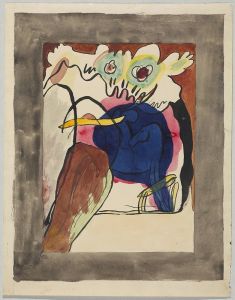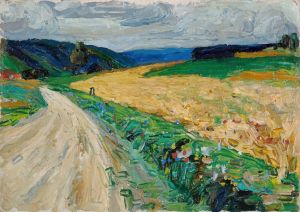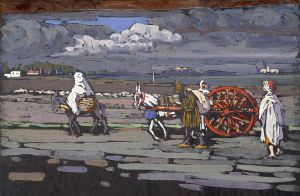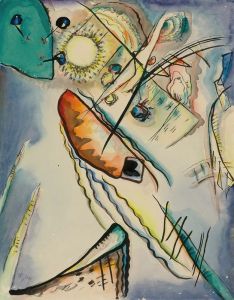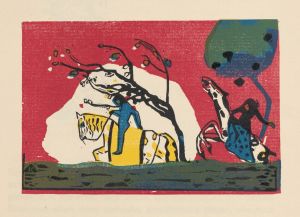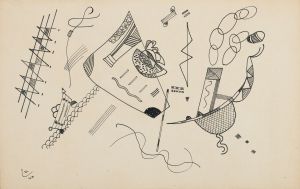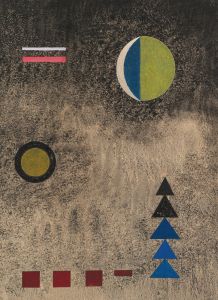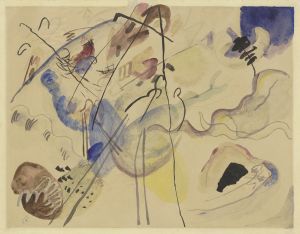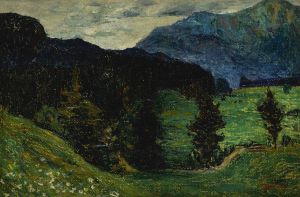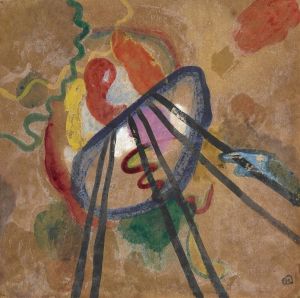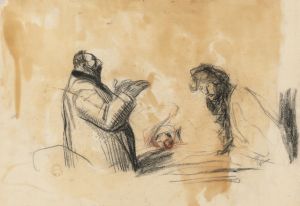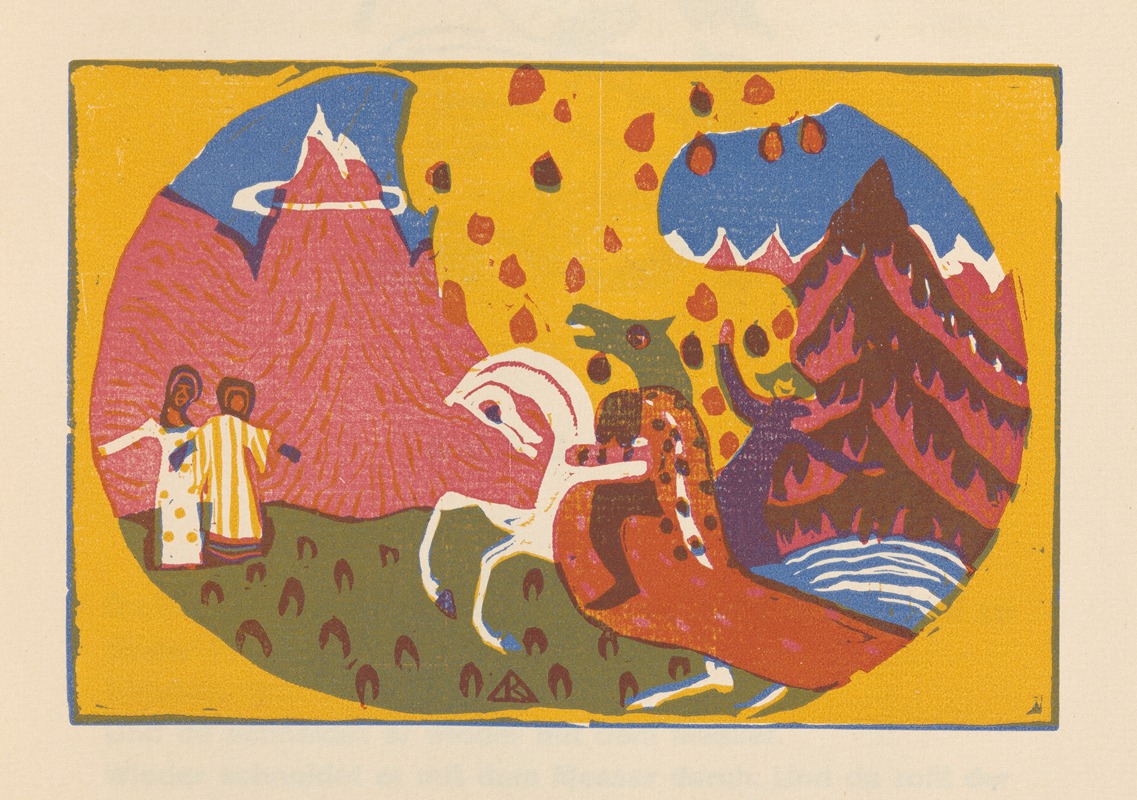
Klänge Pl.05
A hand-painted replica of Wassily Kandinsky’s masterpiece Klänge Pl.05, meticulously crafted by professional artists to capture the true essence of the original. Each piece is created with museum-quality canvas and rare mineral pigments, carefully painted by experienced artists with delicate brushstrokes and rich, layered colors to perfectly recreate the texture of the original artwork. Unlike machine-printed reproductions, this hand-painted version brings the painting to life, infused with the artist’s emotions and skill in every stroke. Whether for personal collection or home decoration, it instantly elevates the artistic atmosphere of any space.
"Klänge Pl.05" is a woodcut print created by the Russian painter and art theorist Wassily Kandinsky. Kandinsky, born in 1866 and passing away in 1944, is often credited as one of the pioneers of abstract art. His work spans various media, including painting, printmaking, and writing, with a significant influence on the development of modern art.
"Klänge" (translated as "Sounds") is a portfolio of woodcuts and prose poems published by Kandinsky in 1913. This collection is one of his most important contributions to the art world, blending visual art with literary expression. The portfolio consists of 56 woodcuts and 38 prose poems, reflecting Kandinsky's exploration of the synesthetic relationship between visual art and music.
"Klänge Pl.05" is one of the woodcuts from this portfolio. The woodcut technique involves carving an image into the surface of a wooden block, which is then inked and pressed onto paper to create the print. This method allows for bold contrasts and dynamic compositions, characteristics that are evident in Kandinsky's work.
In "Klänge Pl.05," Kandinsky employs abstract forms and a limited color palette to evoke emotional and spiritual responses from the viewer. The print features a composition of geometric shapes and lines, which are typical of Kandinsky's abstract style. His use of abstraction was influenced by his desire to depict the inner emotional and spiritual world rather than the external, physical reality.
Kandinsky's work during this period was heavily influenced by his theoretical writings, particularly his book "Concerning the Spiritual in Art," published in 1911. In this book, he articulated his belief that art should transcend mere representation and instead convey deeper spiritual truths. He argued that colors and forms could evoke specific emotions and that art should strive to achieve a harmony similar to that found in music.
"Klänge Pl.05" exemplifies these ideas, as the abstract forms and the interplay of light and dark areas create a sense of rhythm and movement. The print does not depict any recognizable objects, allowing viewers to interpret the composition based on their own emotional and spiritual responses.
Kandinsky's work, including "Klänge Pl.05," played a crucial role in the development of abstract art in the early 20th century. His innovative approach to form and color influenced many artists and movements, including the Bauhaus school, where he later taught, and Abstract Expressionism.
Today, Kandinsky's prints and paintings are held in major museum collections worldwide, and his contributions to art theory continue to be studied and celebrated. "Klänge Pl.05" remains a significant example of his pioneering work in abstract art and his exploration of the connections between visual art and other sensory experiences.





